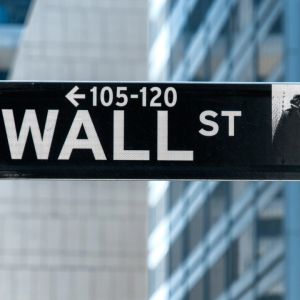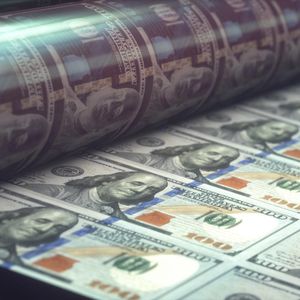Dow fell 313 points after new inflation data and mixed bank earnings confused Wall Street
3 min read
Wall Street had no idea how to process what hit it on Tuesday. Inflation came in hot, tariffs are back on the table, and big-name banks couldn’t deliver a clear signal. The result? Markets got pulled in different directions, and no one could agree on what comes next. The Dow Jones dropped 313 points, falling 0.5% by the end of the session. The S&P 500 gave up 0.1%, slipping slightly from a new all-time high earlier in the day. Meanwhile, the Nasdaq Composite managed to rise 0.5%, thanks to Nvidia , which gained over 4%. The chipmaker told investors it plans to “soon” restart shipments of its H20 GPUs to China, and that was enough to start a rally in tech while the rest of the market stalled. Inflation data triggers tariff fears June inflation figures, released Tuesday, were mixed. Headline inflation rose 0.3% month over month, lifting the annual rate to 2.7%, right in line with Dow Jones forecasts. But the monthly core CPI, which strips out food and energy, only rose 0.2%, slightly under forecasts. Still, the yearly core inflation number came in at 2.9%, also matching estimates. On Saturday, Trump said that a 30% tariff will hit imports from the European Union and Mexico starting August 1. That has serious consequences. Matthew Ryan, head of market strategy at Ebuy, said the inflation report “practically confirmed that President Trump’s tariffs acted to push up consumer prices in June.” Ryan also warned that the real pain hasn’t even hit yet. “Both the main and underlying inflation measures are now printing at their highest levels in four months,” he said. “There’s a time lag between when tariffs hit and when prices rise. More hikes in August would almost certainly bring more inflation.” Skyler Weinand, chief investment officer at Regan Capital, agreed. “It’s highly likely that a tariff-driven inflation reckoning is coming,” he said, though he admitted it was a small relief that Tuesday’s CPI numbers didn’t shock analysts. Earnings numbers fail to inspire investors Traders were also digesting a wave of bank earnings, and frankly, most of them didn’t do much to help. Wells Fargo actually beat earnings expectations, but that didn’t stop its shares from dropping more than 4%. The reason? The bank lowered its net interest income guidance, which traders saw as a bad sign going forward. JPMorgan Chase posted solid second-quarter results, beating forecasts thanks to a strong showing from trading and investment banking. But that still wasn’t enough to impress the market. Its stock slid anyway. BlackRock took the biggest hit among financials. Shares dropped more than 6% after the asset manager missed quarterly revenue expectations. That miss came despite CEO Larry Fink going on CNBC and trying to calm investors. “They think our expenses may be too high, and our expenses are all front loaded,” Larry said on Money Movers . But he didn’t back away. “Long term, I’m a huge buyer of BlackRock at these prices.” The one bank that managed to go against the trend was Citigroup. Its stock rose about 1% after it beat second-quarter estimates. But that was the exception, not the rule. Heading into the earnings season, hopes weren’t high. According to FactSet, analysts expected the S&P 500 to post a 4.3% growth rate in earnings for Q2. That would make it the lowest growth rate since Q4 of 2023. And with how these early reports are going, there’s not much reason to expect an upside surprise. Wall Street now finds itself completely unsure about what matters more: inflation that may be accelerating again, or a weak earnings season that could drag stocks down. At the same time, indexes are already sitting near record highs. So there’s barely any room for mistakes. The only thing anyone agrees on is this: there’s way too much happening at the same time, and none of it looks simple. Your crypto news deserves attention – KEY Difference Wire puts you on 250+ top sites

Source: Cryptopolitan



